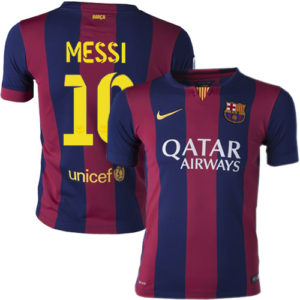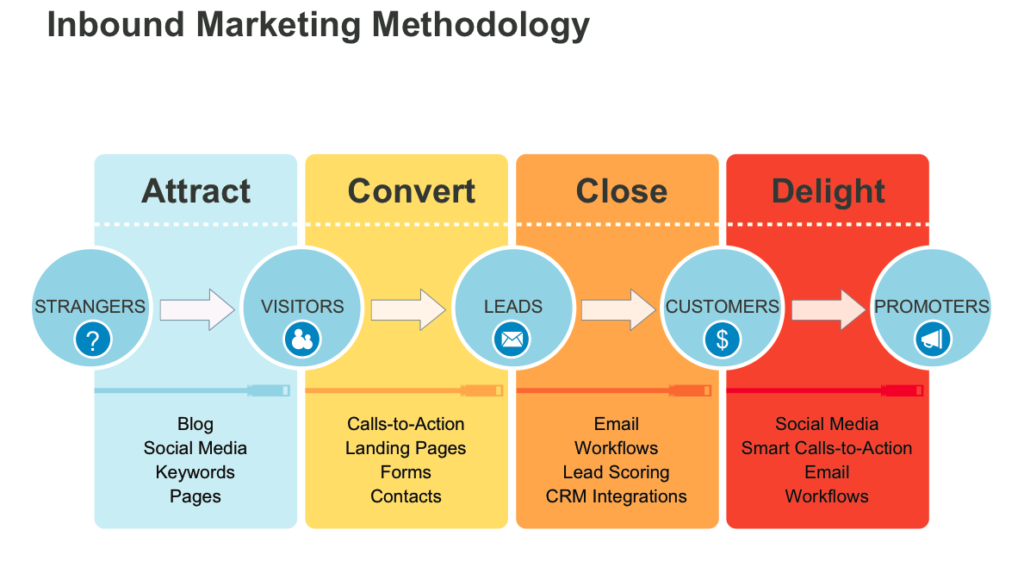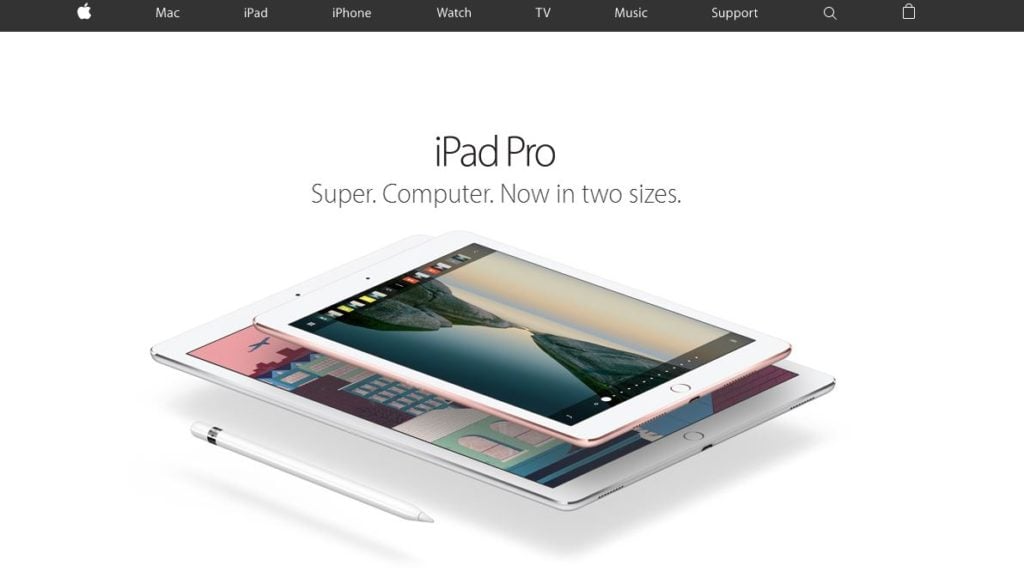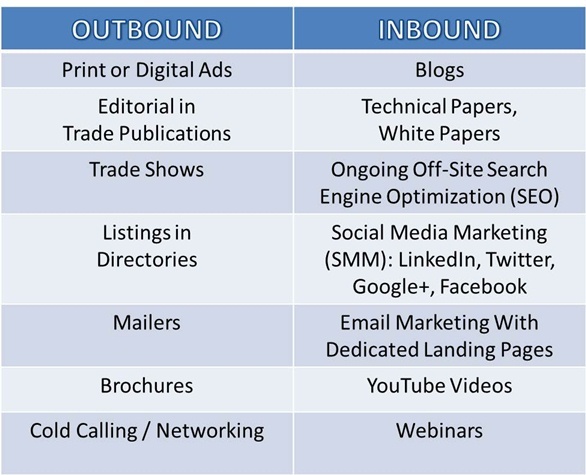“Outbound (traditional) marketing is dead!!”
“Long live inbound marketing!!”
We’re not sure if you’ve noticed or not, but most people love to exaggerate. It is human nature to always look for the next great thing. But as the old saying goes, “Don’t throw out the baby with the bathwater.” There are hundreds of blogs about outbound marketing vs. inbound marketing. We here at i7 take a both/and approach towards advertising rather than an either/or. So today we are presenting 20 advertising ideas for your small business - using (gasp!) both inbound and outbound marketing strategies.
The methodology around inbound marketing is simple: Create an attraction that draws people to your businesses website, Facebook page, LinkedIn page, Twitter account, etc. Clearly this is for the online/digital market. So, to capitalize on this strategy, you need to create compelling/attractive/informative ads that will pique your potential customers’ interest and draw them down the line from stranger to customer to promoter! Here are 10 ideas to use inbound marketing to reach your online audience:
Use Social Media
The advantage of social media is you can choose to organically reach and build your audience or you can pay to promote your posts, services, and pages. All of the social media sites listed below are free to join and use, but have the option to pay for ads to expand your reach.
1. Facebook
Why? Because everyone is there! The odds are your audience (if they are online at all) are on Facebook. Don’t be fooled, Facebook isn’t just for posts (although that is a great way to promote your products, sales, services, etc.). It can host contests and promotions. Facebook for your small business has apps you can integrate, CTAs (call-to-action buttons), targeted reach, analytics, and much more. It may cost a little investment (in time and money) but it still has the power to reach your intended audience.
2. LinkedIn - Business Pages, Groups, Pulse
LinkedIn Pulse is their blogging arena. If your business writes a blog, it is worth the time to put onto LinkedIn Pulse. It allows people and businesses to post their blogs and reach their market through tags and keywords.
LinkedIn Groups provide a place for professionals in the same industry, or with similar interests, to share content, find answers, post and view jobs, make business contacts, and establish themselves as industry experts.
Build a presence for your business on LinkedIn by creating your Company Page, attracting followers, and posting company updates to drive engagement.
Lastly, off your company page, you can create a Showcase Page. Showcase Pages are niche pages connected to the company page. They allow a company to promote specific products or market to a specific buyer persona. LinkedIn users can follow singular Showcase Pages without following the business or their other Showcase Pages. This allows businesses to promote for and cater to the audience specific to the page. In other words, if you have a pet boutique, your dog-lover customers won’t be subjected to reading about your blog post on the new tank cleaning spray for iguanas. With Showcase Pages, marketers can create hassle-free content that's personalized to the audience they’re selling to.
3. Twitter - Integrate All Types of Media
Our friend Ken Krogue shared this tip on Forbes: Bridge Twitter with other media. Create a dynamic experience for your Twitter audience by including different types of media, such as images and videos. Here are some tools you can use:
- Twitpic.com: Create an account, upload photos, and easily share them on Twitter.
- YouTube videos: Simply paste a YouTube URL into a tweet. The video appears in the stream and plays automatically on mobile devices (they must click on to hear sound).
- AudioBoom: Share audio files. Once you have an account, sharing an AudioBoom link is super intuitive.
4. Pinterest - Keep Your Boards Well Organized
Pinterest is different than your small business' Facebook page, where a hodgepodge of information is posted in chronological order, rather than in order of importance or by topic. By allowing you to create multiple boards—one for each category of your products or services, for example—Pinterest helps keep users engaged not only in your general content, but in content that's specific to their interests. Pinterest users are pulling up the app in-store to guide their purchases, so make it easy for them!
5. Instagram - Post Pics of Your Customers Using Your Product
Make a contest where people participate. You can create a hashtag (e.g. #onthebeach) where people would take pictures of themselves using your product at the beach - they can even tag themselves or others. You could give away free prizes, merchandise, or a percentage off to those who “won” or even for all who participated.
6. YouTube - Create a How-To Video
Crazy YouTube Stat: “YouTube overall, and even YouTube on mobile alone, reaches more 18-34 and 18-49 year-olds than any cable network in the U.S.” People are watching YouTube. You are an expert in your field. Make a video that solves a common problem that most of your customers have. If you sell tools, make sure people know how to correctly use them. Or if you find that there is a common problem that people are having with a product, help them by posting a video of how to quickly fix the problem. This could save you a ton of time and be a great resource for your customers.
Use Your Website!
If people have made it to your website, give them a reason to stay!
7. Blog and then blog some more
A blog is the best way to establish your expertise, answer a question, and explain new products. Make your blog informative, entertaining, and engaging. The more blogs you produce in a consistent time-frame, the more people will return to what you have. Also, blogs are the one of the best sources for your social media content. You can tweet specific quotes, post images on Instagram, Pinterest…you get the idea. It comes from the old adage: Create Once Promote Everywhere (COPE).
8. Give away free trials or a percentage off services
This is a great way to get people to experience your great services and/or products. At the same time it is a great way to generate leads. Just ensure they give their email and other information you might deem worthy (phone number, physical address, first and last names, etc.) before you give it away.
9. Highlight a new product
On your banner, highlight the latest and greatest (or something you really want to highlight) so that it gives people a visible and quick opportunity to purchase something.
Here we see what www.apple.com has as their banner currently. They are highlighting the iPad Pro. Actually, if you go to their website you will see that they have a slider that actually highlights three products on a rotating basis. Not bad!
10. A clear call-to-action
If your goal is to have people attend a webinar, sign up for an email list, or even claim a coupon code, make it easy and clear so they understand exactly what they are doing.
The above table gives a good breakdown of what outbound marketing is. The essence of traditional marketing is to find your customers. You reach out to them where they are, while inbound marketing gives your customers ways to find you. Both are effective for reaching an intended audience. Again, just because one is newer doesn’t necessarily make it right (or more right) for your business.
Here are 10 ideas on how to use outbound marketing to your advantage:
1. Go to your industry's trade show(s)
Just as building your tribe on the internet is important, there is some real value in meeting people and talking to people face-to-face. Show off your latest and greatest product and learn about what other people are doing. This may help to…
2. Build a referral team
The reality is most businesses can’t meet all the needs of a customer. So work with other businesses that are related to your field and ask them to refer people to you and you will refer people to them. Not only will it build trust within the business community it is great from the customer experience to have you be a resource for their needs.
3. Brand yourself
Literally have your brand on your shirt, car, pens, keychains, etc. I remember growing up I had a teacher who always said, “You learn from repetition.” We believe the same applies to getting people’s attention. The more they see your businesses name, the more familiar they will feel with your business and that leads to more sales.
4. Mail a thank you card (or a birthday card)
The personal touch can make the difference the next time a customer needs the services you offer. But make it personal! Signing it, “Your Dealership Team” isn’t personal. In fact, it might even backfire. People can be turned off by impersonal mailings. The last thing you want is people telling others about the “junk mail” they received from your business.
5. Magazine ads
In case you haven’t been in a checkout line, airport, or walked by a kiosk in a while - magazines still exist and they still have good readership. Plus many magazines will also offer online ads as well.
6. Support a local team

This works on many levels. It helps defray the cost for the kids and parents and it will have your name in front of people on a weekly basis. Not to mention, kids love to wear their uniforms out in public - to the store, to dinner, pretty much everywhere. (Okay - so maybe Barcelona isn’t a local team, but Qatar Airways is capitalizing big-time on being their sponsor.)
7. Create a memorable business card
From transparent to colorful, business cards can come in a variety of colors, sizes, and even shapes. Here is a link to 50 great ideas for making your business card stand out.
8. Bench/bus stop advertising
Looking to reach a mass audience? Then transit advertising may be for you. Contact your local transit company for information on bench, bus, and shelter advertising possibilities.
9. Community involvement
Visible, tangible involvement with your community is more than good PR, it’s also very effective small business advertising. So choose a charitable event or community association to get involved with and let yourself be seen as a business that cares.
10. Create a customer loyalty program
People love free stuff. And if after five coffees they get one free - Hallelujah! Whether it’s coffee, oil changes, massages, therapy, or airline miles, people like to know they will be rewarded for their loyalty. It shows them appreciation, and provides your business with repeat customers - talk about a win-win! It can be as simple as a punch card or you can have a virtual punch card through an app (free app from Perka).
Conclusion
Are all these ideas right for your business? Probably not! And this is no means an exhaustive list. But we do feel confident that these are great ways to reach your audience and let them find you. The key is to know your audience and what will help them decide to buy from you. What would you add? Please let us know what other advertising strategies you have had success with.





Submit a Comment
Your email address will not be published. Required fields are marked *